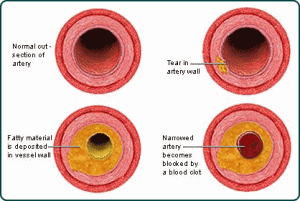
In April 2002, South African computer entrepreneur Mark Shuttleworth paid about $20 million for a round-trip flight to the International Space Station aboard a Russian Soyuz spacecraft. Shuttleworth underwent a year of training and preparation before the space flight. (NASA)
A group of former NASA executives plans to offer excursions to the moon to anyone who can afford the $1.4-million-dollar-per-couple ticket price.
Golden Spike Co. is the latest private company to join the burgeoning space tourism industry.
Once operations launch, the public demand for seats on commercial spacecraft is expected to grow from 373 seats in the first year, to 533 seats in the 10th year, for a ten-year total of 4,518 seats, according to the US Federal Aviation Administration.
Aside from money, health might be a factor in deciding whether or not to take a space vacation. Professional astronauts go through rigorous testing and conditioning before jetting into space.
A study in the British Medical Journal suggests the medical community should establish a set of health screening standards for potential space tourists to determine whether they can withstand the rigors of space travel.
At the moment, there is no standard outlining how medical professionals should advise patients about the health implications of space travel.

NASA’s selection process for picking the first American astronauts included extensive physical and psychological testing. Here, Mercury astronaut Walter Schirra’s lung capacity is tested. (NASA)
“We all have questions from patients related to air travel,” said the study’s lead author Dr. S. Marlene Grenon from the University of California, San Francisco. “In the short future, we may be getting questions from our patients about space travel.”
Medical doctors and other scientists have researched the impact of space travel on the human body ever since the space race between the USA and the former USSR began in 1957. A half-century later, scientists have found space travel does profoundly affect humans, both physically and mentally.
“In a zero-gravity outer-space environment, humans go through very unique physiological changes,” said Grenon. “They experience bone loss, muscle atrophy, increased risk of certain heart problems, a decrease in immune function, kidney stones and motion sickness. These significant changes in the body and how it functions need to be considered.”
Space health guidelines could also help doctors treat those who might suffer the ill effects of space travel while in flight.
So far, commercial space tourism has served only a few passengers and they’ve all gone through the rigorous screening and training given to professional astronauts.
“The changes that occur in zero gravity happen for several reasons,” Grenon said. “This includes volume redistribution towards the chest and head, decrease use of the lower extremities, and the lack of gravitational stimuli on the cells.”

Virgin Galactic has scheduled its first space tourism flight, which will ferry citizen astronauts who pay $200,000 per ticket. (Virgin Galactic)
The study’s senior author Millie Hughes-Fulford, also from UCSF, knows a bit about the impact of space flight on the human body. She was the first woman to travel into space as a working scientist on board the shuttle Columbia in 1991.
“It feels like you’re on top of a roller coaster while you’re in outer space. That feeling, in the pit of your stomach, is what you’ll experience the entire time,” said Hughes-Fulford. “You must check with your doctor to see if your heart and other vital organs are up for this type of adventure.”
Grenon said a new field of medicine could open up as a result of the expected rapid growth of the space tourism industry.
“In the future, I think we can expect space medicine doctors will be needed specifically for the commercial space sector as demand increases,” she said. “And these experts would likely link with specialists on Earth in different fields such as cardiology, vascular surgery or neurology when it comes to specific questions on a condition in space or recommendations on how to best manage a medical problem prior to a flight.”







 Science World is VOA’s on-air and online magazine covering science, health, technology and the environment.
Science World is VOA’s on-air and online magazine covering science, health, technology and the environment.